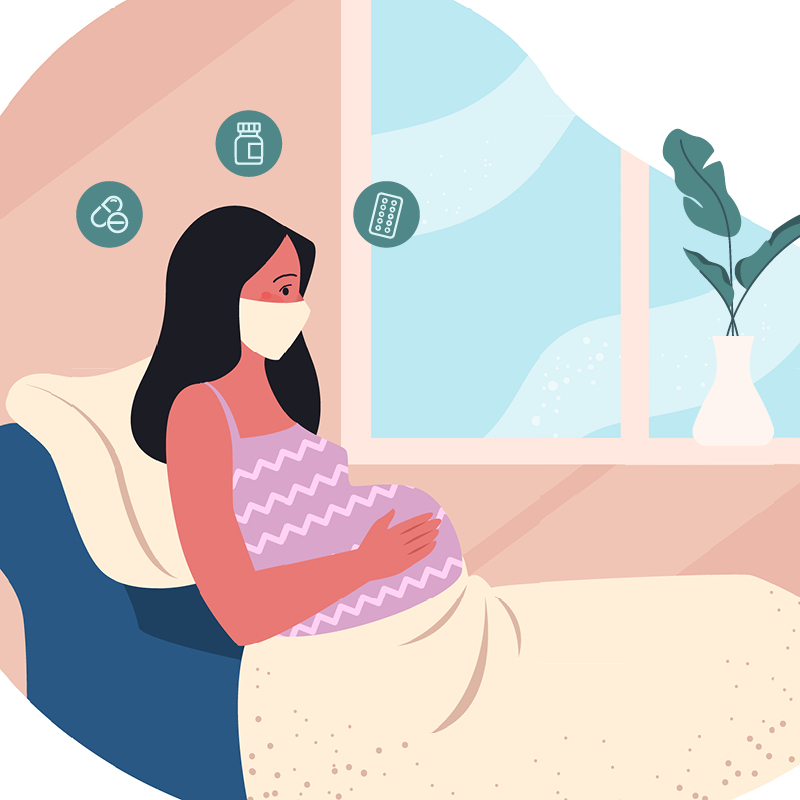Key Takeaways
- Menstrual cycles last 21-35 days and are usually consistent with symptoms and duration.
- Having an irregular period can happen for many reasons, including stress, medication changes, obesity, PCOS, and other issues.
- You should seek care if your period remains irregular for 6 months.
The menstrual cycle can look a little different for everyone. While many people experience periods like clockwork, others may notice their cycle is not always predictable. Persistent irregularity in your menstrual cycle may indicate the presence of a gynecologic problem or other health concerns that need attention.
Our OBGYN experts describe menstrual periods in detail, as well as indicators of irregularity and when to seek care.
What is a menstrual cycle?
A menstrual cycle starts on the first day of vaginal bleeding and ends the day before the next cycle starts. Generally, this spans an average of 21 to 35 days.
Menstruation, often known as a period, occurs when the uterine lining sheds, resulting in bleeding from the uterus through the cervix and out of the vagina. Menstruation generally begins between ages 10 and 16 and continues until ages 45 to 55.
While menstrual cycles are generally consistent in symptoms and length, up to 25 percent of women experience irregular periods. Understanding what to expect during a regular menstrual cycle can help you track your period and know if your symptoms need further evaluation.
Tracking your period
The menstrual cycle has multiple stages – each of which can present with a variety of signs or symptoms.
Menstruation: Days 1 – 6
Day one of menstruation occurs on the first day of full flow. Intermittent spotting or small amounts of scattered bleeding does not indicate day one of menstruation.
During this time, the uterus is shedding its lining and new follicles—or sacs of fluid that contain eggs—start to develop within the ovaries.
Days 6 - 12
After menstruation, the uterus lining begins to thicken. Follicles continue to develop and estrogen levels rise as an egg prepares to be released.
Ovulation: Days 12 - 15
During ovulation, an egg is released from one of the ovaries into the fallopian tube, making it available to be fertilized.
After ovulation: Days 16 - 28
On average, the egg has about 12 to 24 hours in which it can be fertilized after release. If the egg is fertilized, it then becomes an embryo and travels into the uterus, attaching to the uterine lining.
If no fertilization occurs, the egg and uterus lining break down, restarting the menstrual cycle.
To track your period, pay attention to your bleeding and other associated symptoms. Track when they start, stop, and how intense they are,.
The most important symptom to track is the amount of bleeding. Write down when bleeding occurs, the amount of bleeding (light, medium, heavy or spotting) and denote the first day of continuous flow to track the start and end of your menstrual cycles.
Irregular menstrual cycles
A regular menstrual cycle lasts between 21 and 35 days with bleeding for up to seven days. While it’s normal for cycle length to vary up to seven to nine days, certain signs indicate irregular periods, including:
- bleeding in between your periods
- heavy bleeding that soaks through one or more tampon or pad every hour
- bleeding for seven days or longer
- extremely painful periods, or dysmenorrhea
- menstrual cycle longer than 35 days
- menstrual cycle shorter than 21 days
What causes irregular menstruation?
There are a variety of reasons why a period or menstrual cycle may be irregular. Some include:
- genetic bleeding disorders
- obesity
- diabetes
- hypothyroidism
- uterine polyps or fibroids
- adenomyosis
- pelvic inflammatory disease
- chronic uterine infection
- polycystic ovary syndrome
- cancer
- certain medications, such as blood thinners or mood stabilizers
- stress or lifestyle changes
When to seek care
It’s not abnormal for a menstrual cycle to begin a few days before or after you are expecting it once in a while. But at what point should you seek care for irregular periods?
Chronic abnormal bleeding is diagnosed after irregular menstrual cycles have persisted for at least six months. If this is a new problem, monitor your symptoms for three months. If the problem continues for six months, seek medical care.
In addition to irregular periods, there are other menstrual problems that many people experience that may warrant a trip to your gynecologist. If you’re experiencing anything out of the ordinary or you’re worried at all, contact your physician or gynecologist for guidance.
Treating irregular menstrual cycles
If you’re experiencing chronic irregular periods, your provider will work with you to learn more about your medical history, including past pregnancies, medications, procedures, birth control use, or anything else that might be affecting your cycle. Your provider may also order lab work or imaging to gain a more in-depth understanding of potential causes.
Once a provider has determined why your periods are irregular, they can work with you to find a treatment plan depending on the cause. If no specific cause is found, hormonal treatments such as birth control can be prescribed to help regulate the menstrual cycle.







